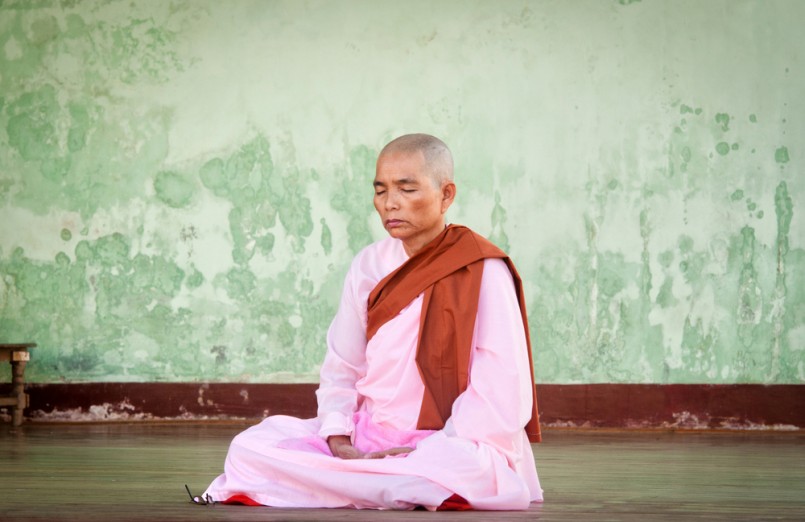Asia
How meditation differs around the world
It’s easy to assume that meditation is simply closing your eyes, breathing deeply, and sitting still. But in reality, meditation is a complex, ritualistic, and artistic practice that is designed for spiritual growth. Due to its spiritual nature, it comes as no surprise that meditation was created out of religious practices, namely Buddhism and Hinduism. Though meditation means something different to everyone and carries a different value to everyone, it benefits each person who participates in the practice, no matter the form that he or she chooses.
If you have ever meditated or you are interested in trying meditation, it is important to understand how meditation differs around the world. Whether you follow a guided meditation on your phone or you try to sit in place with your eyes closed for ten minutes, these ideas of meditation originally came from one of the following types of meditating. Having this context will help you improve your practice and it will help you find a deeper meaning for setting aside time to literally do nothing.
Buddhist Meditation
Zen meditation, Vipassana meditation, mindfulness meditation, and loving kindness meditation are the different types that fall under Buddhist tradition. The most popular of these is Zen. “Zen” means seated meditation and is tied to Chinese Zen Buddhism. It was created by the Indian monk Bodhidharma in 6 BC. Though in the West our ideas of Zen meditation typically come from Dogen Zenji (1200~1253) who started the Soto Zen movement in Japan. Zen meditation is practiced by sitting cross-legged on the floor or a cushion. More specifically in lotus position, which has your ankles resting on the opposite thighs. It is crucial to keep your back straight all the way to your neck, your moth closed, and your eyes gazing toward the floor about 2-3 feet ahead. You can either focus on taking deep breaths in and out while counting, or you can focus on nothing in particular as you are aware of what passes in and out of your mind.
Vipassana is a Pali word that means “clear seeing.” Vipassana originated in 6 BC and comes from the Theravada Buddhist tradition. Vipassana meditation is often called the “mindfulness of breathing,” which is where the popular term “mindfulness” comes from. To practice Vipassana, sit straight and cross-legged and find concentration through breathing. As you focus on your abdomen muscles moving and your breath begin to notice thoughts and emotions that enter and leave your mind. Return to focusing simply on breathing. Now the meditation is set on breathing, and your thoughts are simply “background noise.”
Mindfulness meditation was derived by these previous practices and became especially popular in the West when John Kabat-Zinn published a mindfulness program in 1979 at the University of Massachusetts Medical School. To practice mindfulness meditation yourself, you want to focus on the present moment and gain awareness and acceptance of your thoughts and emotions without judging them.
Loving kindness meditation is also known as Metta meditation, which is a Pali word that means kindness, benevolence, and good will. The meditation came from Theravada and Tibetan lineages and is primarily focused on empathizing with others and feeling positive emotions toward giving compassion. To practice you must image yourself sending “loving kindness” to oneself, a good friend, a neutral person, a difficult person, to all of the above equally, and then finally to the entire universe.
Hindu Meditation
Hindu meditation consists of mantra meditation, transcendental meditation, and yoga meditation. A mantra is a word that is repeated to focus the mind, not a word you’re trying to convince yourself to believe. The focus is on the vibration of the word, which is why it is important to speak it correctly. Some people who practice mantra meditation believe that the word choice is completely irrelevant since it has nothing to do with the meaning. The word “om” is a popular word for mantra meditation. Again, sit with your spine straight and this time eyes closed. Repeat your chosen mantra in your mind over and over. You can also try whispering it slowly for a different type of sensation. Repeat the word for a set number of times or for a specific duration of time. You’ll find that the mantra will continue on its own without you having to consciously say the word in your head.
Transcendental meditation was created by Maharishi Mahesh Yogi in 1955 in India and the West. Mahesh was the guru to the Beatles and The Beach Boys. More than 5 million people practice this form of meditation worldwide. You must pay someone to teach you this form of meditation, which includes 15-20 minutes of meditating using mantras twice per day. The mantras are give to each person based on gender and age, and they are Tantric names of Hindu deities.
Yoga meditation consists of many different forms, but it originated in 1700 BC. The primary goals is spiritual purification and Self-Knowledge. It consists of physical postures, breathing, and meditation.
Chinese Meditation
Taoist and Qigong are two types of Chinese meditation. Taoist meditation comes from Daoism, which is a Chinese religion and philosophy dating back to Lao Tzu. The practice focuses on living in harmony with nature, or Tao. The goal is to quieten the body and mind, unify body and spirit, find inner peace, and harmonize with the Tao. You must sit with a straight back and your eyes half-closed and pointed toward your nose.
Qigong means “life energy cultivation.” This meditation is meant for health and martial arts training, consisting of slow body movements and consistent breathing. It was originally taught in secret in Chinese Buddhist, Taoist and Confucianist traditions, but since the 20th century it has become a widely popular practice. There are thousands of ways to practice Qigong meditation, along with eighty different types of breathing.
Christian Meditation
Meditation differs around the world and that becomes most obvious when we see how meditation has influenced Christian tradition. While in Eastern traditions, meditation centers on transcending the mind and attaining enlightenment, Christian meditation is centered around gaining closer intimacy with God. Different types of Christian meditation include contemplative prayer which involves repeating sacred words or lines again and again, contemplative reading which means meditation focused on Bible text, and “sitting with God,” which is a meditation where all focus goes toward being aware of God’s presence.






0 comments